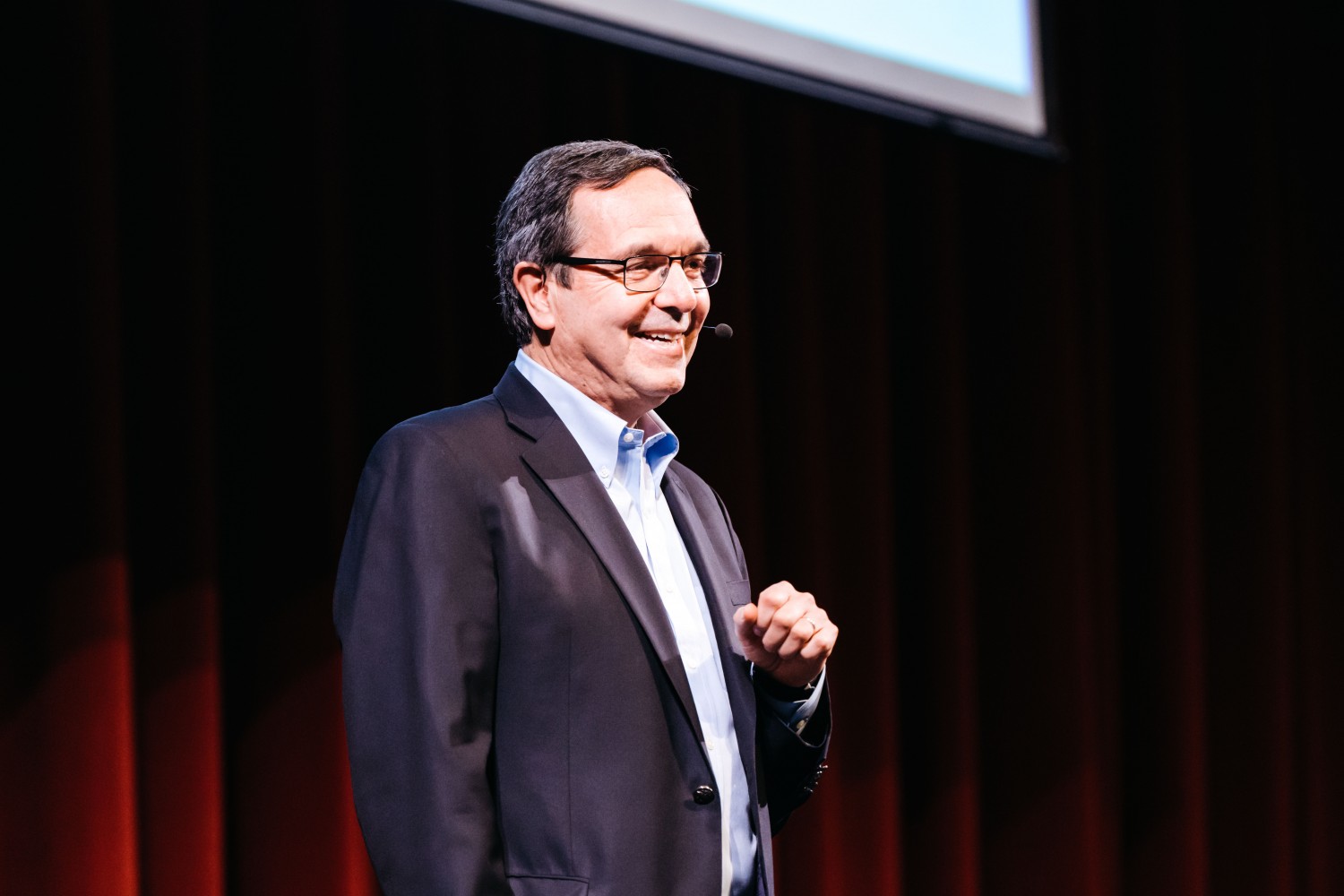
‘It’s not about the money’ — planner calls for Brampton to take concrete steps toward 2040 Vision
The City of Brampton likes to invite guest speakers who tell it what it could be and what it isn’t. Listening and not acting is something Brampton has a knack for.
The city has just concluded four weeks of talks at its downtown Rose Theatre concentrating on its 2040 Vision. The plan, also called Living the Mosaic, is the city’s future vision, completed in 2018 by internationally regarded urban designer Larry Beasley in consultation with more than 13,000 citizens. Now, with staff in the midst of an Official Plan review, city hall is working out how to take the ideals of the document and turn them into the reality of planning laws, zoning requirements and its broader growth strategy.
“Cities are not responsible for the ‘what’ of population, that’s at the national level, but the cities are responsible for the ‘how,’ 8 80 Cities President and renowned urban thinker Gil Penalosa said on Feb. 5. “City council decides if it’s going to be four storey buildings or if it’s going to be 40 — developers do whatever city council lets them do. If the city council says you can do whatever you want, the law of the jungle [...], you get 40 storey buildings. If you tell them they can only do six, they’ll do six.”
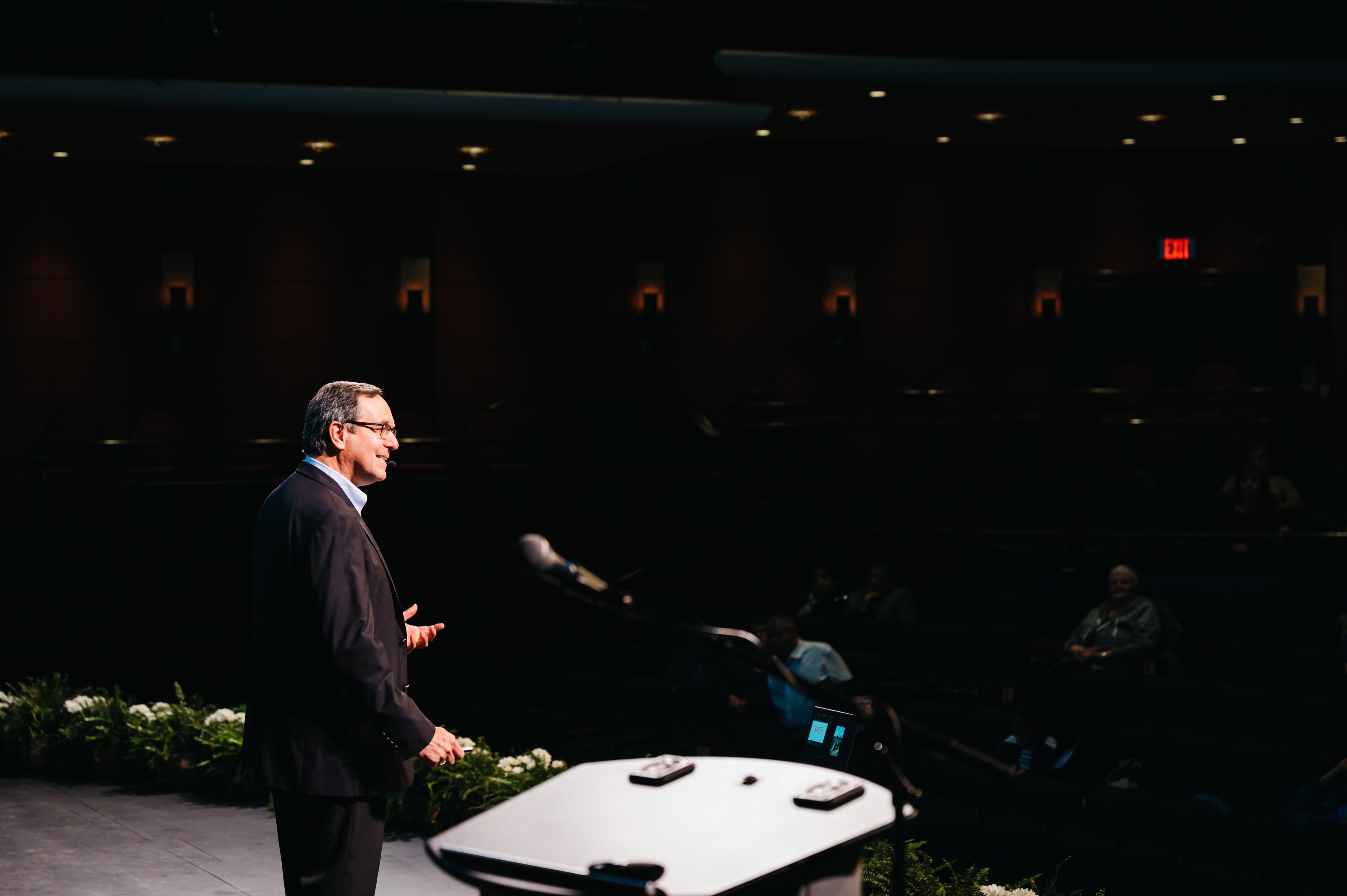
Urban planner Gil Penalosa talks during Brampton's 2040 Speaker Series
At the heart of Penalosa’s work is the idea cities should take initiative and work for everyone. 8 80 Cities, an organization he founded and chairs, is built around the principle roads and streets should be safe for both eight and 80 year olds to walk and ride along in comfort. The idea is in tune with the 2040 Vision, but far removed from the reality of Brampton today.
“We have to improve the cities we have today so they work for many, many people and we’re going to have to do it radically different,” Penalosa said, telling audience members success for Brampton is not about “copying and pasting” from other cities, but about learning and improving.
Penalosa’s speech, littered with references to Vision Zero, slower street speeds, and walkable cities, offered concrete advice to Brampton. For these speeches, so often soaked in optimistic hypotheticals, it is rare to receive a transferable full road map or advice, but Penalosa provided it.
Speaking about the power of parks and public space to unlock a city’s potential, he flashed images of stunning green spaces in the Columbian capital of Bogota across his projector. “It’s not about the money,” he said. “Brampton has more money than Bogota.”
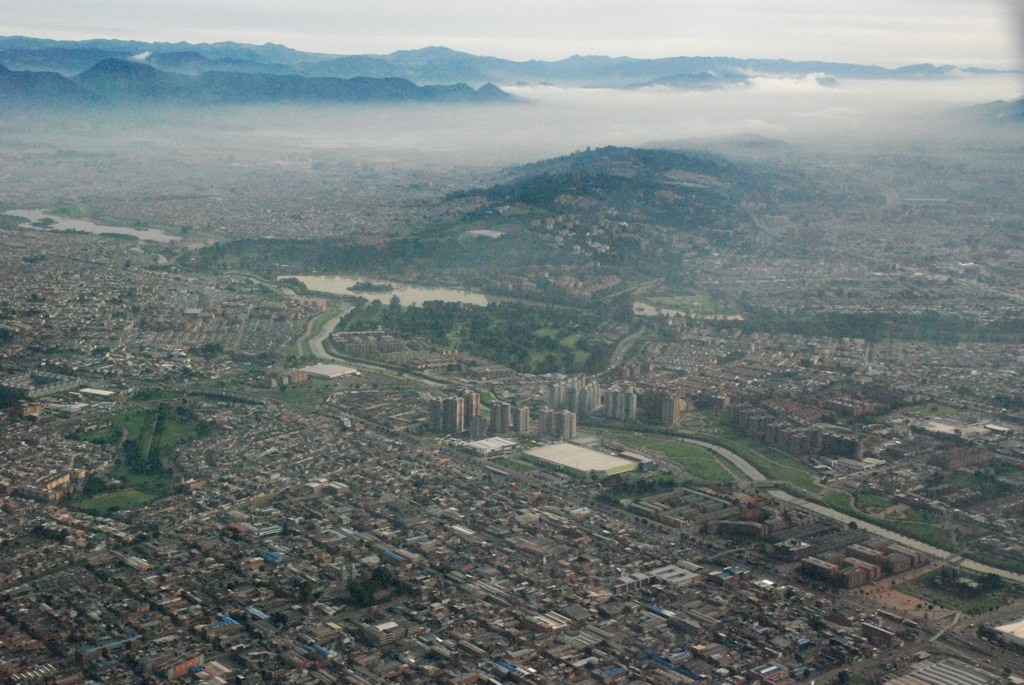
The city of Bogota, Columbia
Designing cities catering to all residents and empowering them to move is about motivation instead. “To build bike lanes we don’t have money, to build parks we don’t have money and then you see they’re widening the roads [and] building flyovers,” he added.
Nowhere is this more true than Brampton. In 2019, city councillors declared a climate emergency at the same meeting they endorsed the creation of Highway 413, a new sprawl-inducing project to be built through Caledon. Equally, the city’s proposed 2020 budget document lists the widening of McLaughlin Road between Wanless Drive and Mayfield Road along with increased width for Chinguacousy Road on the same stretch.
Penalosa also flicked the example of Melbourne up on his projector screen, citing it as proof of rapid transformation. 30 years ago, Melbourne was a relatively undesirable location, struggling with its image, he said. Fast forward three decades and it has a thriving restaurant and bar scene, is a world class tourist destination and known to be one of the most livable cities in the world.
“Brampton, you can be as good as anyone,” he said. “Don’t just aim to [match other cities], aim to be better [...] you can compete with the world, [not just] be the cream of the crop.”
For anyone who has passed through the city in recent years, that seems like a tall order. Mismatched and uncoordinated zoning decisions have led to swathes of industrial warehouses next to small housing towers and semi-detached properties. It is no coincidence a freight trucking company in Brampton was the site chosen by soon-to-be former leader of the Conservative Party, Andrew Scheer, to promise the carbon tax would be “history” in the run-up to October’s federal election.
It would be easy to dismiss the 2040 Vision as nothing but a pipe dream: a project so different from the reality of Brampton 2020 as to be impossible. But Penalosa offered an abundance of simple and cost-effective steps for the way forward.
In addition to some cash, the city requires two things: political bravery and an end to the dithering.
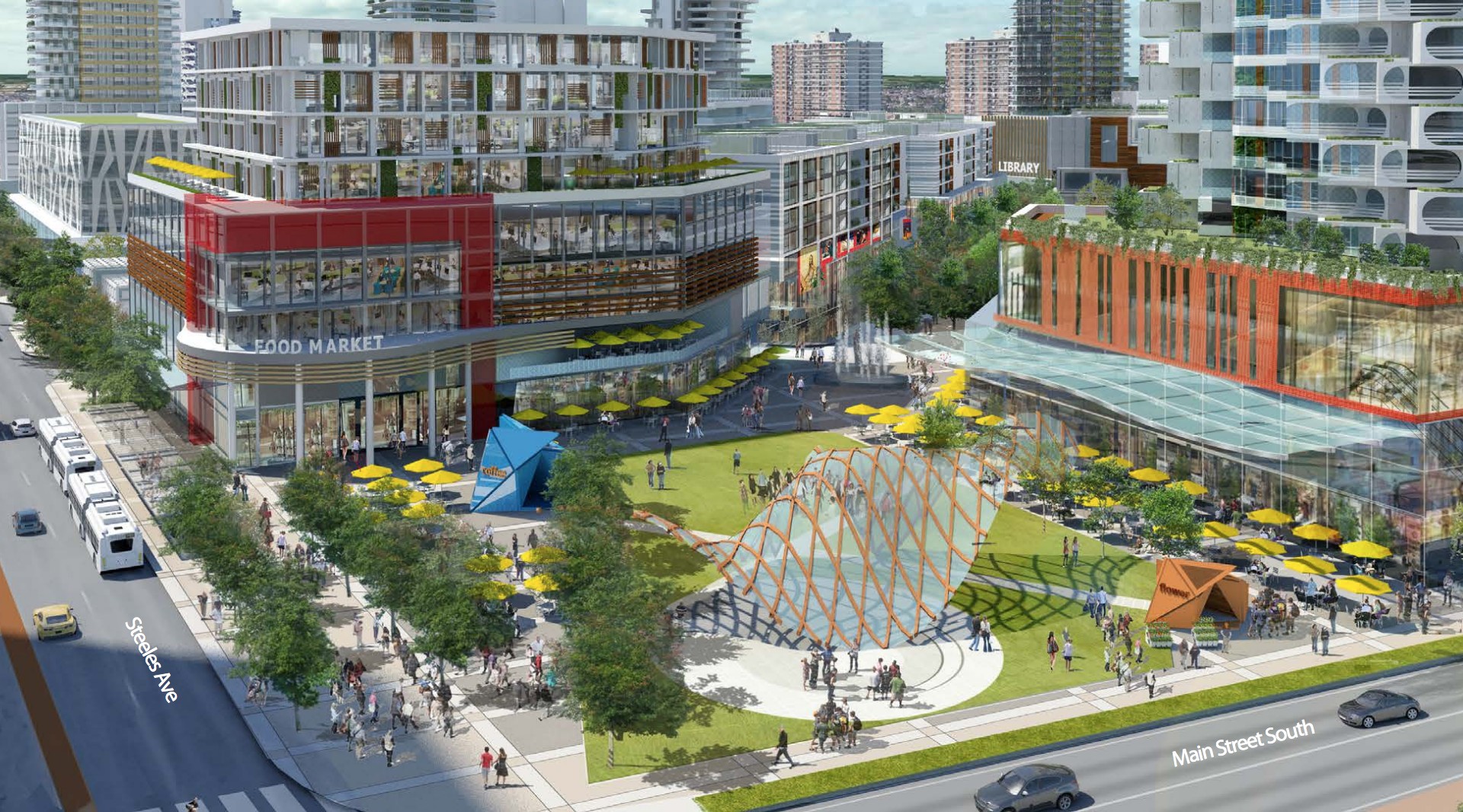
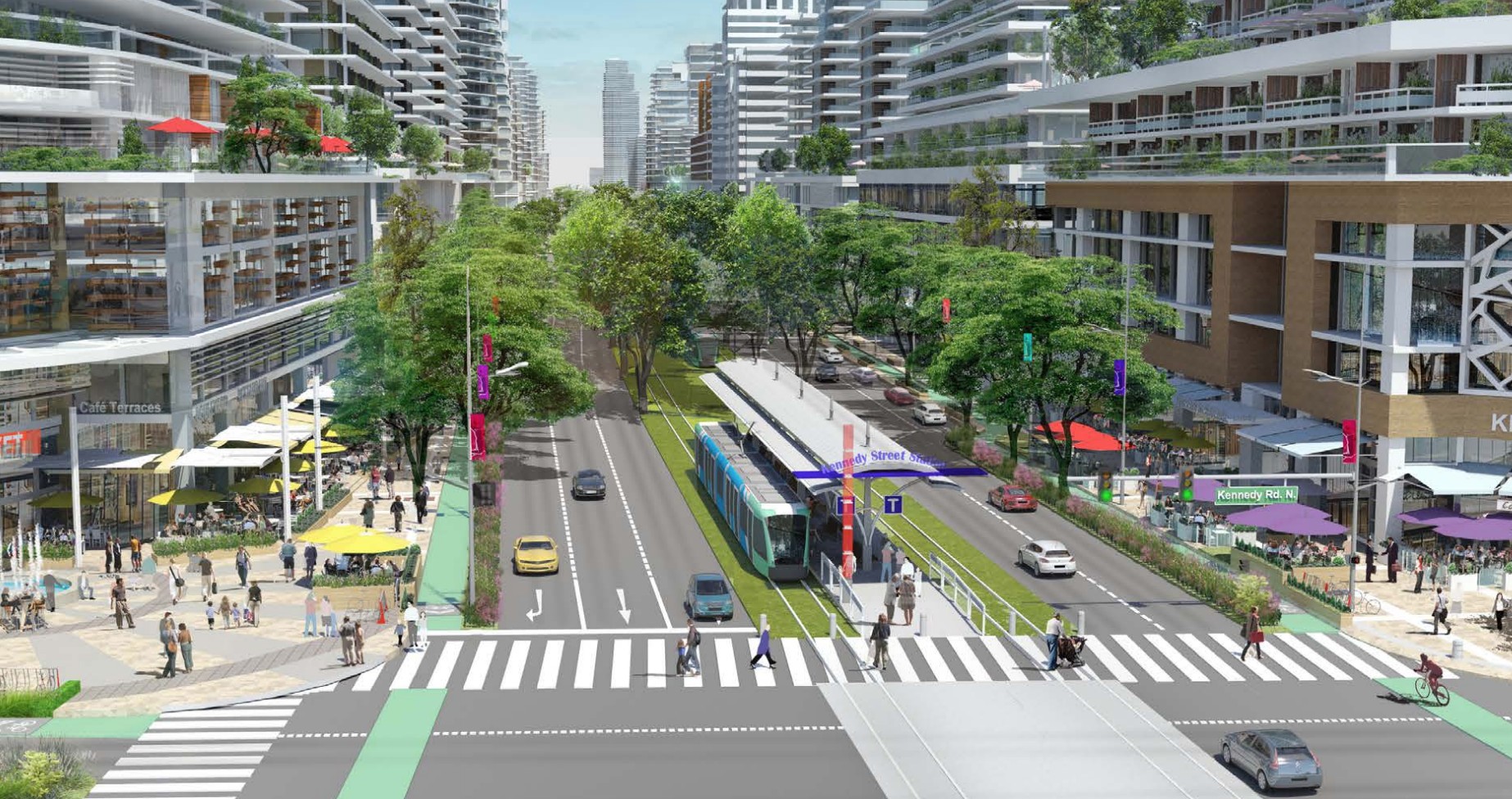
Renderings from the City's 2040 Vision depict Brampton's hopes for the future.
He recalled a time when he and a series of volunteers painted the outer two lanes of the Danforth green, placing flower pot barriers on them to model a wider sidewalk without the City of Toronto having to invest in reconstruction for a pilot. He mentioned hundreds of cities across the world who close roads to traffic on the weekends and open them up to families for activities.
“The road network is the biggest public space any city has,” he said, adding that in people’s mind it was the home of the car not the general population.
In Brampton, a single block of Main Street is closed on a regular basis to host a weekend farmer’s market, demonstrating city hall has the power to move in this direction. There is little prohibiting council from piloting some of the other ideas suggested. Instead of widening McLaughlin Road in 2020, staff and volunteers could take paint and transform two of its lanes into wider sidewalks, providing more space for pedestrians and deincentivizing use of the car.
If Brampton is looking for simple amendments to its philosophy and Official Plan to help usher in its 2040 Vision, Penalosa’s ideas and the 8 80 Cities mindset offer just that. These possible courses of action don’t require major developers to commit to master plans and complete communities nor do they command high consultant fees.
The only ingredient is action.
Email: [email protected]
Twitter: @isaaccallan
Tel: 647-561-4879
Submit a correction about this story


